Hello TrueFire students and guitar fanatics! It’s been a while since my last Riff Journal lesson from the inaugural issue where we explored neo-classical style playing with a face-melting rendition of Mozart’s Turkish dance “Rondo”. For this current lesson, I want to get back to basics with a necessary (and often overlooked) exploration of the CAGED Scale System.
Mention CAGED Scale System to a guitarist and most will think it’s a cryptic musical term or acronym for something. The word “CAGED” is actually a pneumonic device representing the C, A, G, E, and D barre chord forms, each existing in one of five unique scale patterns and used as the framework for melodic soloing. With the CAGED system, you’ll learn five scale, chord, and arpeggio “territories” on the fretboard that connect like jigsaw puzzle pieces AND where the important chord tones are in each. Here’s the lowdown – for each barre chord shape, C, A, G, E, and D, there’s a corresponding major scale overlaying the same fingerboard territory that includes the notes of the chord shape. You can play scales up and down, forwards and backwards, and even execute some entertaining licks, but more importantly you must know where the best and strongest notes are to end phrases or otherwise you’re dead in the water. These sturdy notes are “chord tones” and in most music genres melodies follow the chord changes by strategically using them. This concept will always sound more musical and make your ideas melodically and harmonically interesting. The Root, 3rd, and 5th (and 7th if playing over jazz chords) degrees of the scale make up the chord, but we’ll stick to the triad notes here to keep it simple.

In this lesson, we’ll check out the “C form” scale pattern, barre chord shape, and arpeggio. The scale pattern is a comfortable fingering for playing major scale notes surrounding the C chord shape at the 12th fret. On the neck diagrams, the root note, C, is represented by “R” on the neck diagram and all subsequent scale notes are described numerically by their respective distance from the root note. Example – the note after C is D (major 2nd from the root), followed by E (major 3rd), F (perfect 4th), G (perfect 5th), A (major 6th), and B (major 7th). Seeing and hearing the scale tones numerically goes a long way towards helping your ear understand their unique qualities against the chord (in this case C).
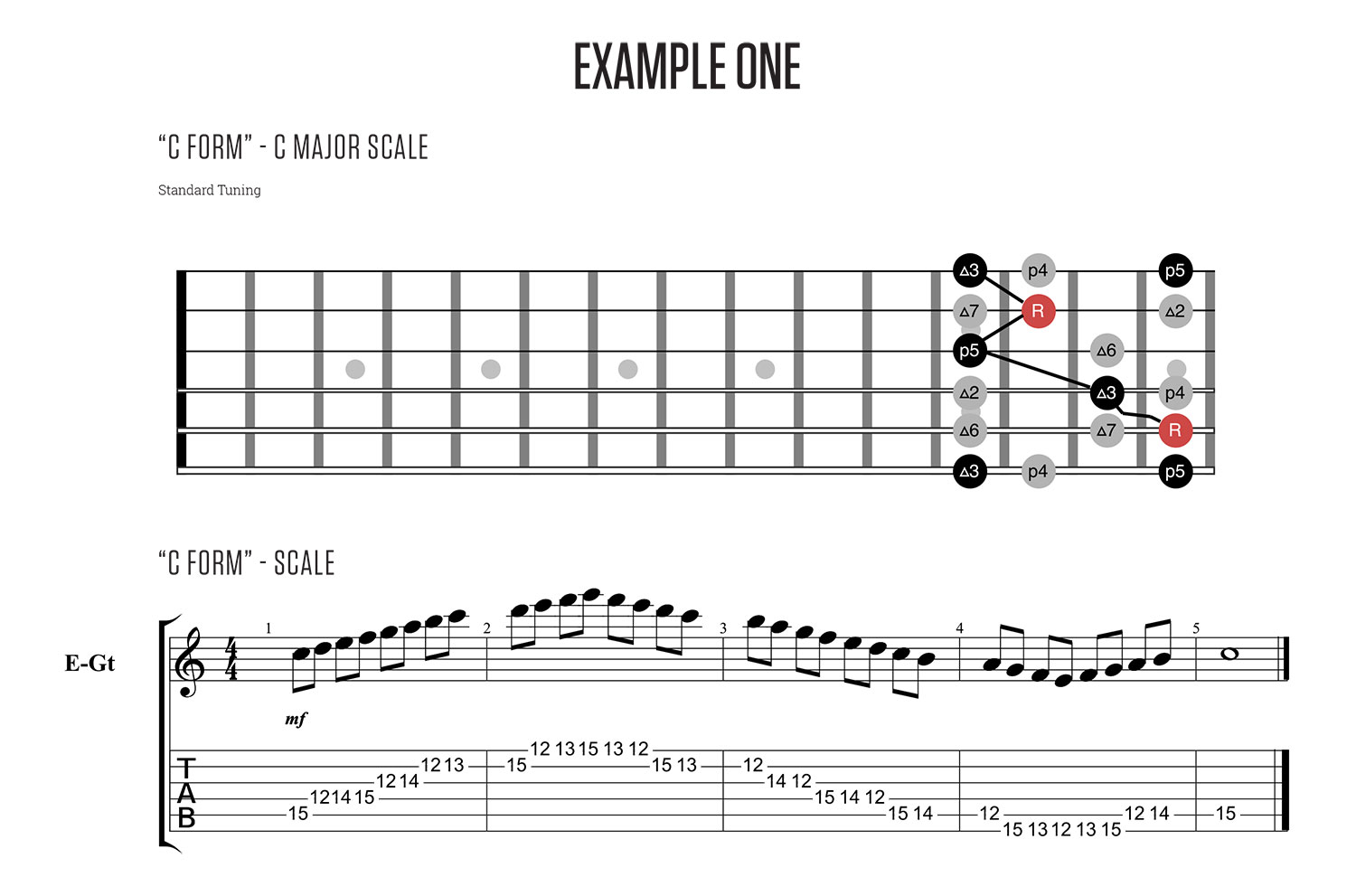
Example 2 illustrates the C form barre chord grip at the 12th fret. Notice how this chord shape exists in the C form scale pattern.
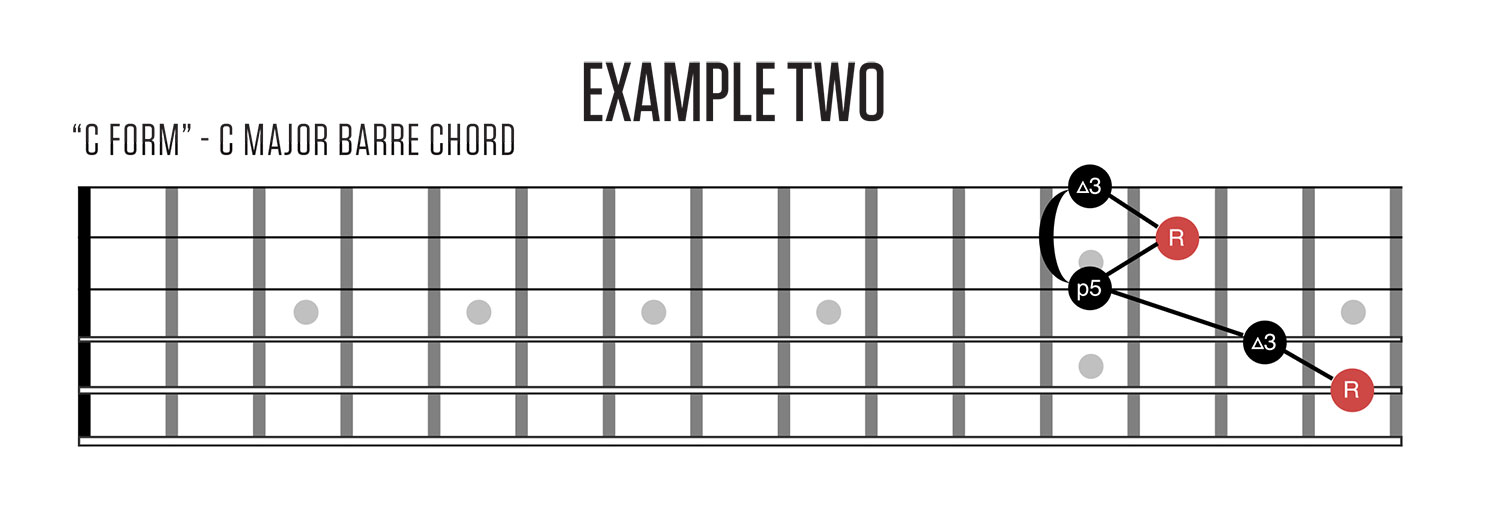
A great way to see and hear chord tones in a scale pattern is to play the chord as an arpeggio. Check out the C form arpeggio that doubles as a killer sweep-picking exercise in Example 3.
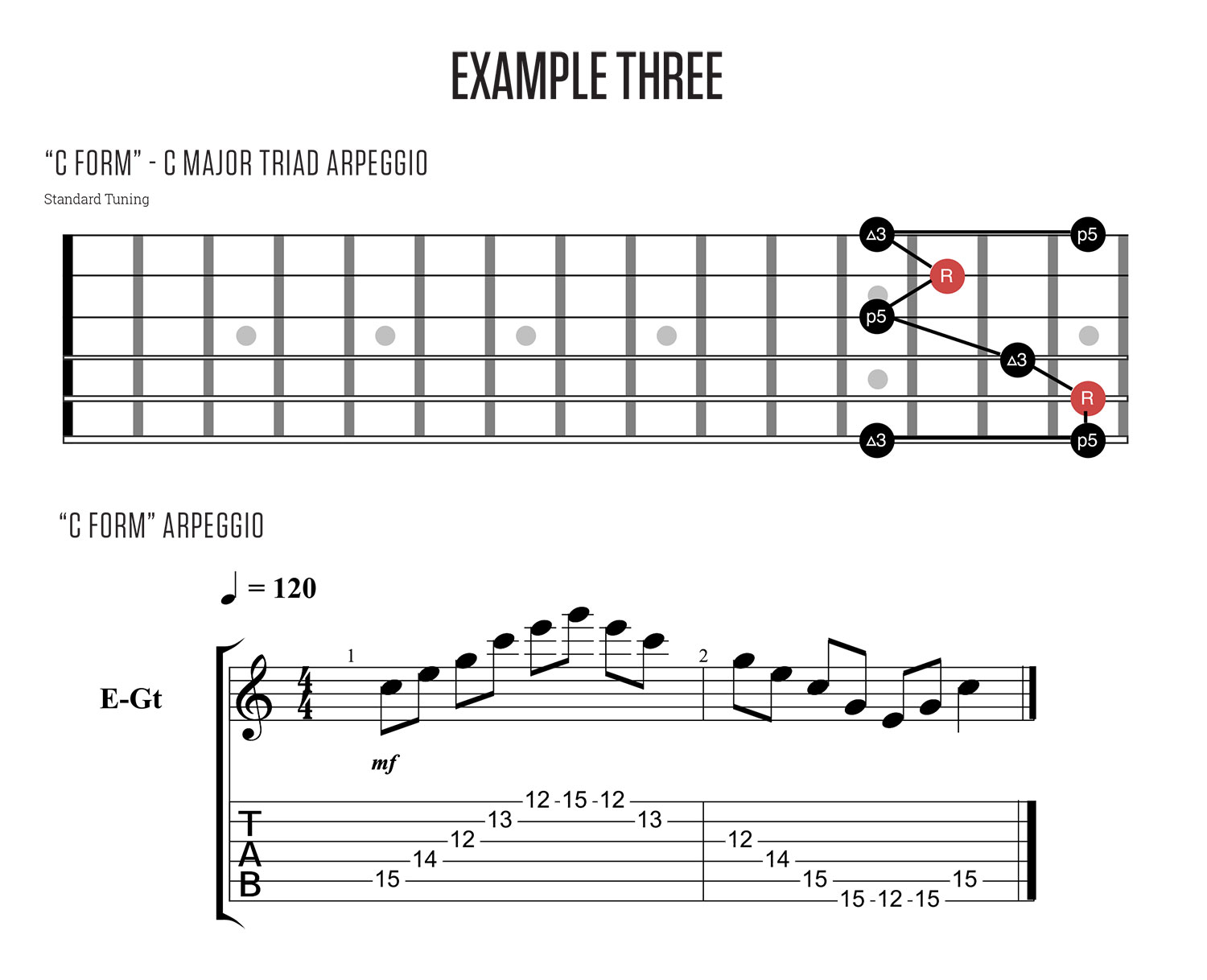
I like to exhaust each pattern by developing melodic exercises that highlight chord tones, strengthen the ear, and increase muscle memory. One particularly great routine involves chord tones as well as the note directly above and below, in a circling manner like Example 4.
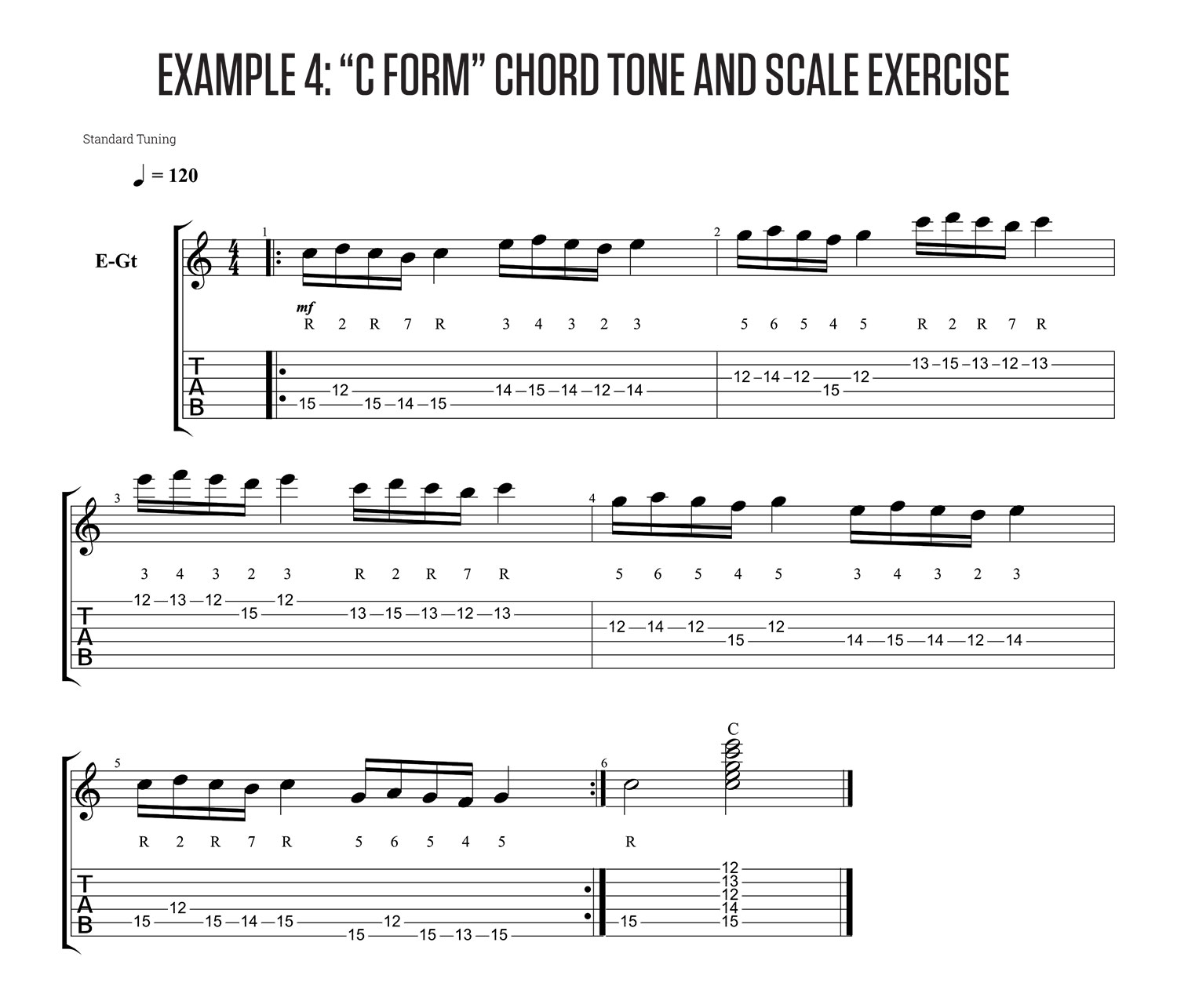
Listen how each chord tone sounds while played over a C chord. The Root, 3rd, and 5th sound very good, because they are the chord tones making up a C major chord (C, E, and G), while non-chord tones like the 4th and 7th (F and B) don’t sound as stable. Chord tones are always solid and resolved, while non-chord tones may have a nice color, but are not necessarily the best choice to end a phrase with. Understanding and having command over these chord and scale tones is crucial to being a solid improviser and soloist.
Once you’ve got the scale and arpeggio bolted down, you’re ready for the final and most fun step…soloing! This is where you put everything you learned on the line and show what you can do. And it’s not about speed and shredding, but rather taking your time to develop tasty melodic ideas. Below is a short solo spotlighting chord tones embellished with neighboring scale tones. Notice the employment of chord tones ending each phrase and how it has a definite “Hendrix” flavor in spots à la “Little Wing” and “Wind Cries Mary.” Ahhh, Jimi knew all about majestic chord tones!
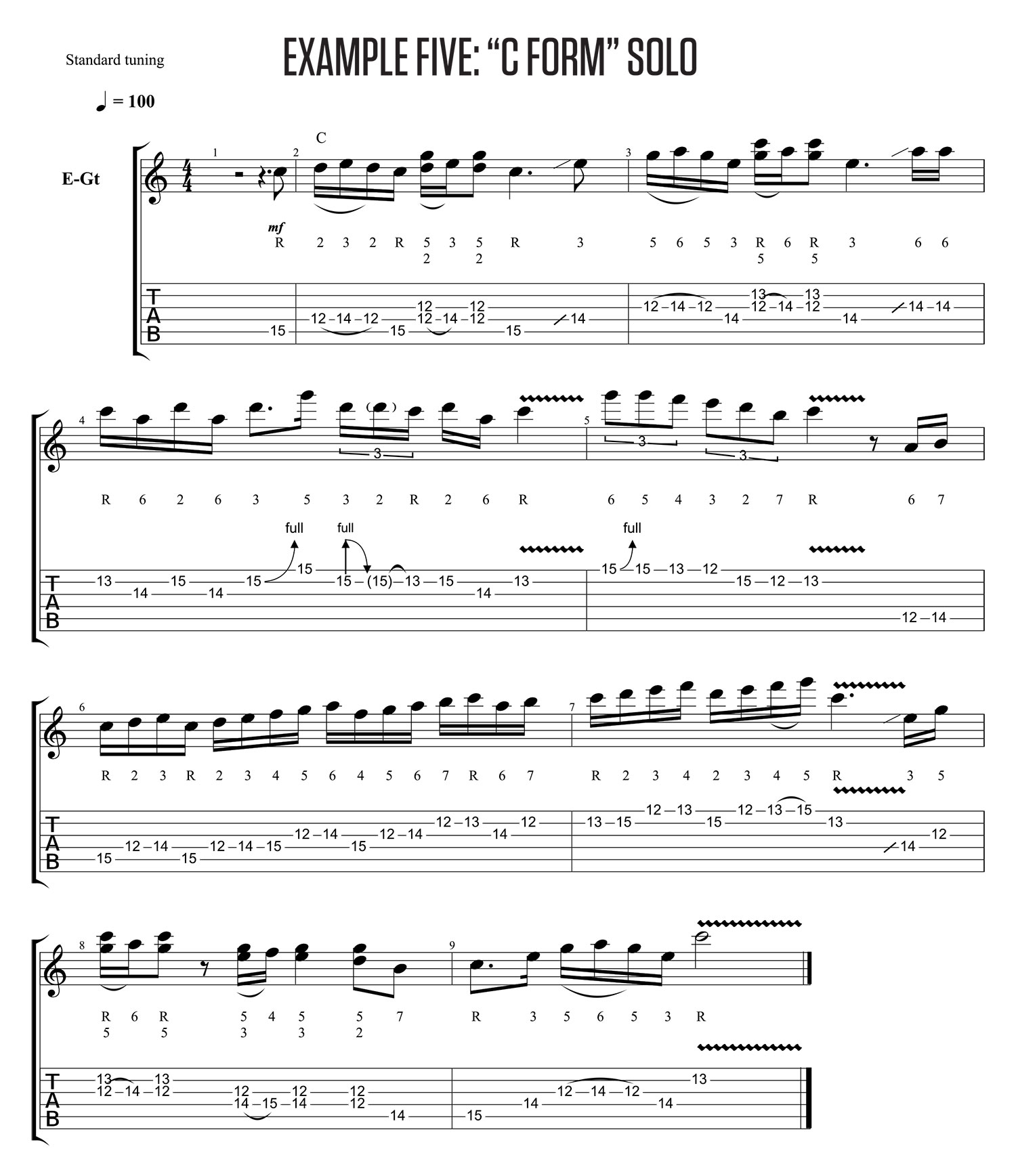
The heart of the CAGED System is recognizing chord shapes and surrounding scale tones as one unit in any given fingerboard territory, not to mention providing a complete knowledge of the fingerboard that’s empowering and freeing. The CAGED System definitely will get you there. If you enjoyed this lesson and want to dig deeper, check out my CAGED Commander course on TrueFire for a complete lowdown on the CAGED System. The course includes all five scale patterns, chords, arpeggios, concepts, and soloing using the CAGED System.

